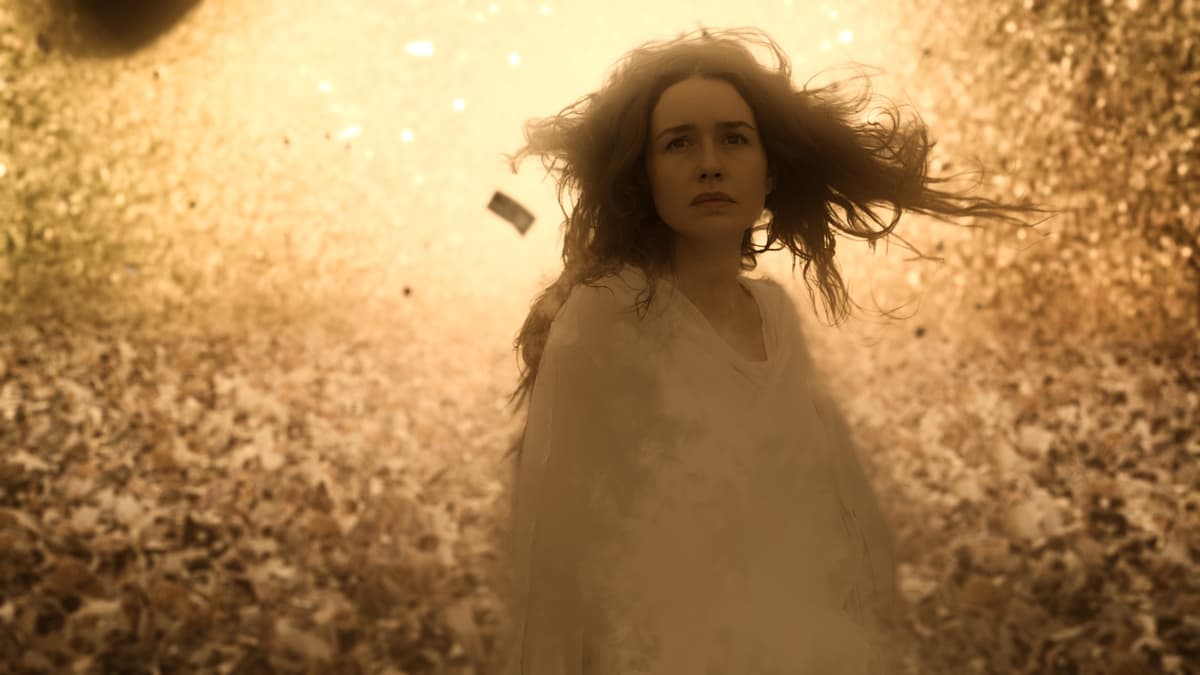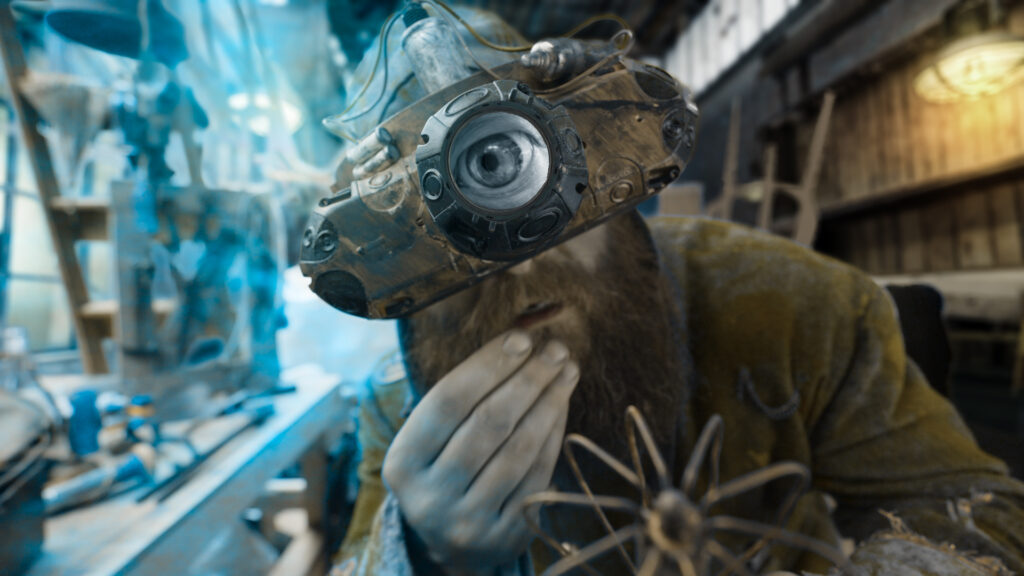A Harry Potter for Grown-Ups, ‘Myth of Man’ Comes Draped in Victorian Nostalgia
Is it a critical evasion to recommend Jamin Winans’s film as an experience rather than as a movie proper?

Although the filmmaker Jamin Winans might bristle at the analogy, his new film, “Myth of Man,” is best described as Harry Potter for grown-ups. Like author J.K. Rowling, Mr. Winans takes significant inspiration from 19th-century British literature and culture. The picturesque, soot-covered cityscapes featured in “Myth of Man” are reminiscent of those described in any number of novels by Charles Dickens. The sweet and often cloying eccentricities of its characters are similarly Dickensian in nature.
Those improbable flying machines and over-sized cantilevers seen marching in the distance of “Myth of Man”? They could’ve been dreamt up by Jules Verne for one of his epic adventures. Let’s not forget the outer limits of spiritualism popular at the time, a woozy system of beliefs held dear by Queen Victoria and extolled by an otherwise level-headed Arthur Conan Doyle. Faeries were also the rage during this Alice-through-the-looking-glass era.
“Myth of Man” is, in short, draped in Victorian nostalgia. The sepia-toned cinematography, the peculiar attention paid to decorum, and an overweening belief in innocence — is Mr. Winans a creature of the here-and-now? His heroine, Ella (Laura Rauch), is pixie-ish in demeanor, radiating Chaplinesque esprit as she navigates the streets of a pan-European setting. This world isn’t down-at-the-heels so much as deshabille. It is also in the grip of a fearsome authoritarian power.
Here is where the director tips his 21st-century hand: “Myth of Man” is an Orwellian exegesis about the perils posed to human integrity by artificial intelligence. Or, at least, that’s one guess. The most generous of interpretations would come up short outlining the picture’s intent let alone its parameters. Mr. Winans has crafted something jewel-like from components that are poetic, punky, and precious.

This is another way of saying that “Myth of Man” will not be to everyone’s taste. Although futuristic dystopias do tend to make for big box office, a filmmaker had better hew to the niceties of mainstream filmmaking should he expect to turn a hefty profit. But, really, a wordless melange of “Oliver Twist,” Terry Gilliam’s “Brazil” (1985), Max Ernst’s collage novel “The Hundred Headless Woman” (1929), the stray painting by Brueghel or Bosch, and Buck Rogers? Mr. Winans is more concerned with artistic necessity than with the bottom line.
The production notes confirm as much: The director and his wife and co-producer, Kiowa Winans, sold their home in order to realize this careening, jerry-rigged venture. Every aspect of the film — the elaborate props, costumes, character designs and what-have-you — were seen to by Mr. and Mrs. Winans. The visual effects, an engaging amalgam of the high-tech and the handmade, were also realized by our confabulist couple. “Myth of Man” took 7 years of their time.
So, what goes on here? The aforementioned Ella, who is deaf and mute, traverses a retro-futuristic city and makes watercolor-like renderings of its conmen, ragamuffins, and guttersnipes, each of whom seems to be, in equal parts, threatening and good-hearted. All citizens are affixed with a glowing label that connotes the vitality of their life forces. Whenever one or two of them feel the need to express a modicum of individuality, a host of “dust soldiers” ascends from the rafters to quell insubordination. Who’s in charge here? The question is never answered.
Then there’s the much-to-be-feared rolling cloud of red dust and more things than are possible to list on a scorecard. Is it a critical evasion to recommend “Myth of Man” as an experience rather than as a movie proper? Even at his most finicky or winsome, Mr. Winans has created something admirable and, at moments, jaw-dropping. Cinema-goers enamored of fecund imaginations, low-fi cinema, and the knottier precincts of idiosyncrasy will want to make a point of boggling over the Winans’ quixotic morality tale.

